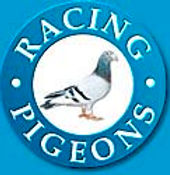

RODEO CITY
RPC
The sport of racing pigeons
has evolved from the ancient hobby of keeping homing pigeons. For centuries, pigeons have been used as message carriers by nobility, armies, and businessmen, and have been variously called: Messenger Pigeons, Carrier Pigeons, and Homing Antwerps. In the early 1800s, competitions were organized in Belgium, usually regarded as birthplace of the sport of racing pigeons. That is why early racing pigeons were called Antwerps, after the city of Antwerp, Belgium.
Racing in the USA started in the 1870s in Philadelphia,
in Canada soon thereafter. Today, there are two national
organizations for racing pigeonsin the US and one
in Canada. The oldest organization is the
International Federation of American Homing
Pigeon Fanciers, Inc. formed in 1881. The largest
organization is the American Racing Pigeon Union
formed in 1910. The Canadian Racing Pigeon Union, Inc.
was formed in 1929.
A minimum of five flyers make up a club. More than one club may organize races together forming organizations variously called Combines, Concourses, Federations and Associations. Clubs are affiliated with a national organization from which they can purchase seamless identification bands which must be placed on a baby’s leg
between 6 to 10 days, after which the leg grows making it
impossible to remove the band without cutting. The band
becomes the bird’s permanent identification number.
Example: AU 11 LCL 342 – this bird is registered with the
American Racing Pigeon Union, was hatched in 2011,
through the Lake Charles Racing Pigeon club (LCL) and is the only bird in that club and year with the number 342.
A loft is where pigeons are kept. It can be but a few cubic feet to several hundred cubic feet depending on the location and wishes of the fancier. Youngsters
will bond to a loft when they are very young. They do not
have to be born in the loft to consider it their home.
Youngsters are usually placed on a landing board before they
can do much more than flutter. A “trap” is the place where the
pigeons can enter the loft but not go back out. The youngsters
learn how to trap or enter the loft and gradually, by increased
flying, learn their backyards, neighborhoods, and the general
areas surrounding their loft. After four or five months of daily flying around the loft, the youngsters can be taken away from the loft for a training toss. Some flyers toss starting at one mile, others at five miles or farther. The youngsters have the homing instinct bred into them and the tossing “activates” the instinct they already have. They are not taught to come home. The birds are taken progressively farther to fine tune their homing instinct so that they return home quickly and to physically condition them to fly the ever increasing distances. Training usually stops at 50 to 100 miles before the races begin.
There are two racing seasons. Youngsters are raced in the year of their birth in the fall from distances of 100 miles to 400 miles. Old birds are raced in the spring from 100 to 600 miles. The birds are brought to the club shipping location and entered into the race. They are placed in race crates, which are then sealed and the crates are transported to the designated race site. Depending on the weather conditions, the birds are all released together and fly together before peeling off to fly to their own lofts. When they arrive home, they must enter the loft and be “clocked.” It is not the first bird home that wins the race, but the fastest. All flyers have had their lofts measured form the various release points so each lofts birds are flying distances that can vary 50 or more miles. By taking the flying time and distance flown, the speed in yards per minute is calculated and the fastest speed wins the race.
Diplomas are awarded, usually on the basis of 1 diploma for every 20 birds entered into the race in the US. In Europe, the award is usually 1 prize for every 5 birds entered.
There are futurity races scattered throughout the North American continent where youngbirds are sent for a fee and compete in one or more races for prize money.


